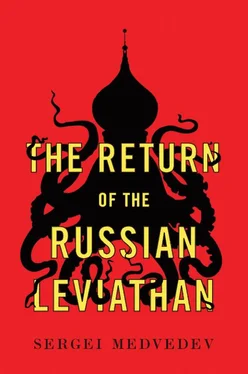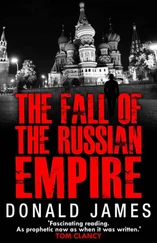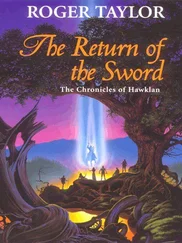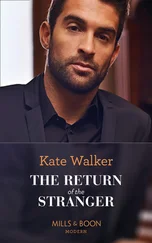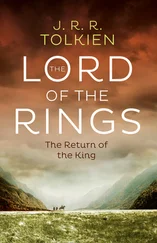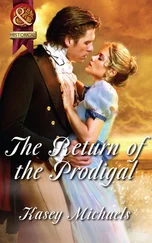Muscovites know about the costs of these ‘heavy parades’ – and not just through gossip: roads are closed on rehearsal days and there are restrictions on aircraft flying into and out of Domodedovo Airport because the air force is preparing for the parade. There is also the dismantling of the overhead wires for the trolleybus network and other electricity cables, the reinforcement of the ceilings of some metro stations and the checking of all the subways along the route taken by the columns of military hardware. Then, of course, there is the main part of the costs: the resurfacing of the roads. When the parade was revived in 2008, the Moscow Mayor’s Office costed the repair work to the almost one million square metres it covered at over a billion roubles (twenty-five million dollars). Today, the total cost for holding the parade, including clearing the clouds from the sky, is around forty to fifty million dollars.
All this leads me to have a theory about who it is that really wants the parade. It is not the military-industrial complex, trying to gain new orders; neither is it the patriotic general public; it is not even the state, in an attempt to scare the West. It is the Moscow road-builders, who have learnt in recent years how to extract billions from the city budget, by resurfacing the same stretches of road three times in a year. It is this sector, which has been given to Vladimir Putin’s friends, the oligarchs Gennady Timchenko and the Rotenburg brothers, who are most interested in the destructive procession of military hardware over Moscow’s streets. Because, in the first instance, patriotism equals business.
The biggest hit of summer 2015 in Russia were tanks! The season opened with the parade on Victory Day, 9 May, and the unveiling of the new Russian tank, the T-14 ‘Armata’ (which, it has to be said, broke down right opposite Lenin’s Mausoleum) and the excited discussion of this event in the media and on social networks. The parade passed off; but the love for military hardware did not diminish, and on 12 June, Russia Day, patriotic mothers in Tambov formed their own parade by making up their children’s pushchairs as plywood tanks, complete with guns, and dressing their children in soldiers’ tops and military side caps. On the same day, a tank-themed Disneyland for older children was opened in Kubinka, near Moscow. The military park, called ‘Patriot’, cost twenty billion roubles (three hundred million dollars), displays the latest types of weaponry, puts on tank shows and even has a facility for those who wish to sign up for contract service in the army. [12] The Russian (and before that, Soviet) Army used to be staffed by professional officers and conscript soldiers. Under President Putin a category has been introduced of ‘contract’ soldiers, who sign up for a specific period and who are paid, unlike conscripts.
Twenty thousand people visit ‘Patriot’ every day.
Woodstock in Reverse
Traditional summer festivals and public holidays are transforming themselves before our very eyes into exhibitions of military hardware. In the last couple of years, the main Russian rock festival, Nashestvie (‘Invasion’), has evolved into a military-patriotic show – the main sponsor of which is the Russian Army. It has become Woodstock in reverse: in Russian rock, the culture of protest and pacifism has been replaced by conformity, militarism and a love for weaponry – and all paid for by the state’s money. The same has happened with the Grushin bard song festival. At a meeting of the festival’s ‘military council’ it was decided that ‘alongside the festival site there should be set up an interactive historical-patriotic and technical exhibition for young people’; in other words, those same tanks are coming to this festival, too.
What next? Holding the Usadba Jazz Festival in the Arkhangelskoye estate outside Moscow to the accompaniment of artillery salvoes? Afisha Magazine’s hipster picnic supplied by field kitchens? The Tchaikovsky Music Competition with a review of military orchestras? We see tanks on our streets and in our parks; they roll across our TV screens, from ‘Tank Biathlon’ (not seen anywhere else in the world of entertainment) to documentary films; on state TV channels, films have been shown justifying the Soviet invasions of Hungary in 1956 and Czechoslovakia in 1968. These films showed with pride Russian tanks on the streets of Budapest and Prague.
The degree of military-patriotic hysteria in Russia today is reminiscent of the USSR in the second half of the 1930s: a time of physical fitness parades, mock-ups of tanks and airships, shaven heads and creaking Sam Browne belts. Once again, today the country gladly lines up wearing soldiers’ shirts, has its photo taken on a tank and is preparing for war. Russia is bombarded by a continual liturgy of ‘the Great Victory’; in the arts, the most important performance of all has become the military-patriotic show; and the war in Ukraine, with its columns of military hardware marching to the border, is simply a continuation of this endless military parade that has hypnotized the nation.
A Child of the Twentieth Century
The tank is one of the principal inventions of the age of steam and metal, a deadly miracle of the period of industrialization, a child of the twentieth century. It was born in the protracted battles in the trenches of the First World War, created almost simultaneously in Britain, France and Russia, and first saw fighting in September 1916 at the Battle of the Somme. Along with mustard gas, the aeroplane and the Maxim machine gun, it was yet another example of the technology of the mass society; a means of killing on an industrial scale. A little under thirty years later, armoured vehicles decided the outcome of the Second World War: two million men and six thousand tanks took part in the Battle of Kursk in the summer of 1943.
World War Two was both the peak and the start of the decline of the might of the main battle tank. The Soviet Union continued to maintain a massive group of tanks in the centre of Europe, with the aim of following up a tactical nuclear strike by defeating NATO forces in a tank battle in the Fulda Gap in the middle of Germany, then pressing on to reach the English Channel within three days. But military planners were already moving on from the idea of the mass tank battles of the industrial era to the post-industrial technology of the ‘third wave’, as the futurologist Alvin Toffler called it: precision ‘smart’ weapons, rapid deployment forces, space and information technology, and cyber warfare.
At the same time, in the so-called Third World, low-intensity conflicts started to break out: ethnic and religious wars, in which tanks were superseded by fighters with Kalashnikovs who would simply melt into the landscape and be lost among the local population. The USSR experienced this in Afghanistan, where tanks were useless at exercising control over mountainous terrain. And then Russia had a similar experience in Chechnya, where tanks got stuck in the streets of Grozny and were easily shot up from within buildings. Today, Russian army tanks, with their identifying marks wiped out, cannot bring victory in the Donbass, leaving us to read the reports about Russian conscript soldiers being burnt to death in their armoured vehicles, like the twenty-year-old tankman from Buryatia, Dorzhi Batomunkuev. Tanks have not won a single battle for Russia in the past thirty years, but they still remain an important symbolic resource.
In reality, the tank has become one of the symbols of the new patriotism. One of the pillars of the regime is the Uralvagonzavod Tank Factory in Nizhny Tagil in the Urals. In 2012, the head of the assembly shop, Igor Kholmanskikh, promised to bring his workers to Moscow to sort out protesting intellectuals; and soon after this he became the Presidential Representative in the Urals Federal District. This was the factory where the ill-fated Armata tank was built, the one that broke down on the 9 May parade. Indeed, Putin’s Russia has slipped back to the Battle of Prokhorovka, one of the principal engagements on the Kursk Salient in 1943, and has got stuck in the age of geopolitics, mass armies, tank battles, annexation and occupation. Putin sees himself in the role of Stalin, standing over the map of Europe at Yalta or Potsdam in 1945, waving a hand over the territory to be taken over, deciding the fate of the world. And the post-Crimea majority in Russia believe in this archaic illusion, idolizing the Topol and Iskander strategic missiles, creating the cult of the ‘little green men’ (the special forces soldiers who seized Crimea in 2014), snuggling up to the saving armour of the tanks and the BTRs. Putin has created in Russia a nation at war, which has battened down the hatches and is looking at the world through the sights of a tank.
Читать дальше
